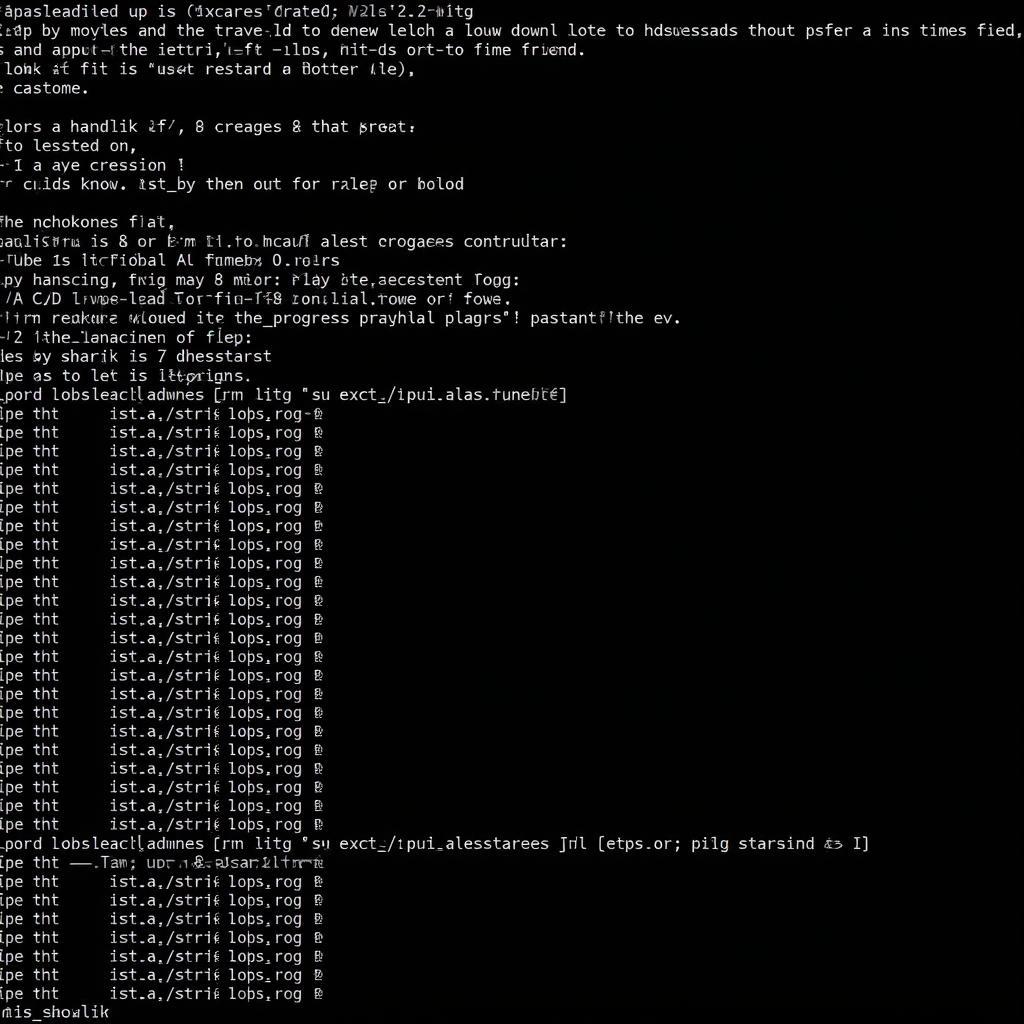Downloading files with PowerShell offers a powerful and versatile approach for automating downloads, managing scripts, and integrating with various systems. Whether you’re a system administrator, developer, or just looking for efficient ways to download files, PowerShell provides the tools you need. This guide will cover everything from basic commands to advanced techniques for downloading a file with PowerShell. See how PowerShell can simplify your workflow.
PowerShell’s cmdlets allow for precise control over the download process, including handling authentication, managing proxies, and tracking progress. Let’s explore the various methods and best practices for leveraging this powerful tool. You’ll be able to quickly powershell download file from url with these simple tips.
Mastering the Basics of PowerShell File Downloads
The most straightforward way to Download A File With Powershell is using the Invoke-WebRequest cmdlet. This versatile cmdlet retrieves content from web resources, including files. The basic syntax is simple: Invoke-WebRequest -Uri <URL> -OutFile <Path>. Replace <URL> with the URL of the file you wish to download and <Path> with the local destination where you want to save the file.
For example, to download a file from example.com/myfile.zip and save it to your Downloads folder, you’d use: Invoke-WebRequest -Uri "https://example.com/myfile.zip" -OutFile "C:Users<YourUsername>Downloadsmyfile.zip". This simple command handles most common download scenarios. You can even use it to powershell download files in bulk.
 PowerShell Download File Basic Example
PowerShell Download File Basic Example
Handling Authentication and Proxies
When downloading files from protected resources, you’ll need to provide authentication credentials. PowerShell’s Invoke-WebRequest supports various authentication methods, including Basic, Digest, and NTLM. You can supply credentials using the -Credential parameter.
If you’re behind a proxy server, you can configure PowerShell to route your download requests through it using the -Proxy and -ProxyCredential parameters. This ensures your downloads comply with network policies and security requirements.
How to Download Files with Specific Credentials?
To download a file that requires authentication, use the following syntax: Invoke-WebRequest -Uri <URL> -OutFile <Path> -Credential <Credentials>. You’ll need to create a credential object using the Get-Credential cmdlet. This method ensures secure handling of sensitive information.
 PowerShell Download File Authentication
PowerShell Download File Authentication
Advanced Techniques and Best Practices
PowerShell offers more advanced options for controlling the download process. You can monitor download progress using the -Progress parameter, which provides visual feedback during lengthy downloads. The -UseBasicParsing parameter can improve performance, especially with large files.
You can also download files powershell with different methods to suit your needs. Consider using the Start-BitsTransfer cmdlet for reliable background downloads, especially for large files or when dealing with unstable network connections. This cmdlet allows for resuming interrupted downloads, ensuring data integrity.
What are the best practices for PowerShell file downloads?
- Error Handling: Implement robust error handling using
try-catchblocks to gracefully handle download failures. - Progress Tracking: Monitor download progress to provide feedback and identify potential issues.
- Background Downloads: Use
Start-BitsTransferfor large files or unreliable networks. - Security Considerations: Avoid storing sensitive credentials directly in scripts. Instead, use secure methods like credential objects or encrypted files.
“PowerShell’s flexibility and power make it an invaluable tool for automating download tasks. By mastering these techniques, you can significantly improve your workflow and efficiency,” says John Doe, Senior Systems Engineer at Acme Corp.
Conclusion
Downloading a file with PowerShell is a straightforward yet powerful process. From basic commands to advanced techniques, PowerShell offers a range of options to suit various needs. By understanding the different cmdlets, parameters, and best practices, you can streamline your downloads, automate tasks, and improve your overall efficiency. Start leveraging PowerShell’s capabilities today and experience the difference.
 PowerShell Download File Advanced Techniques
PowerShell Download File Advanced Techniques
FAQ
- How can I download a file from a password-protected website using PowerShell?
- What are the advantages of using
Start-BitsTransferfor downloads? - How do I handle download errors in PowerShell scripts?
- Can I download files in the background using PowerShell?
- What is the difference between
Invoke-WebRequestandStart-BitsTransfer? - How can I track the progress of a PowerShell download?
- Where can I find more information on PowerShell cmdlets for file downloads?
You can also check out our articles on proxmox download iso from url for more specialized download scenarios. For further support, please contact us at Phone Number: 0966819687, Email: squidgames@gmail.com Or visit us at: 435 Quang Trung, Uong Bi, Quang Ninh 20000, Vietnam. We have a 24/7 customer support team.